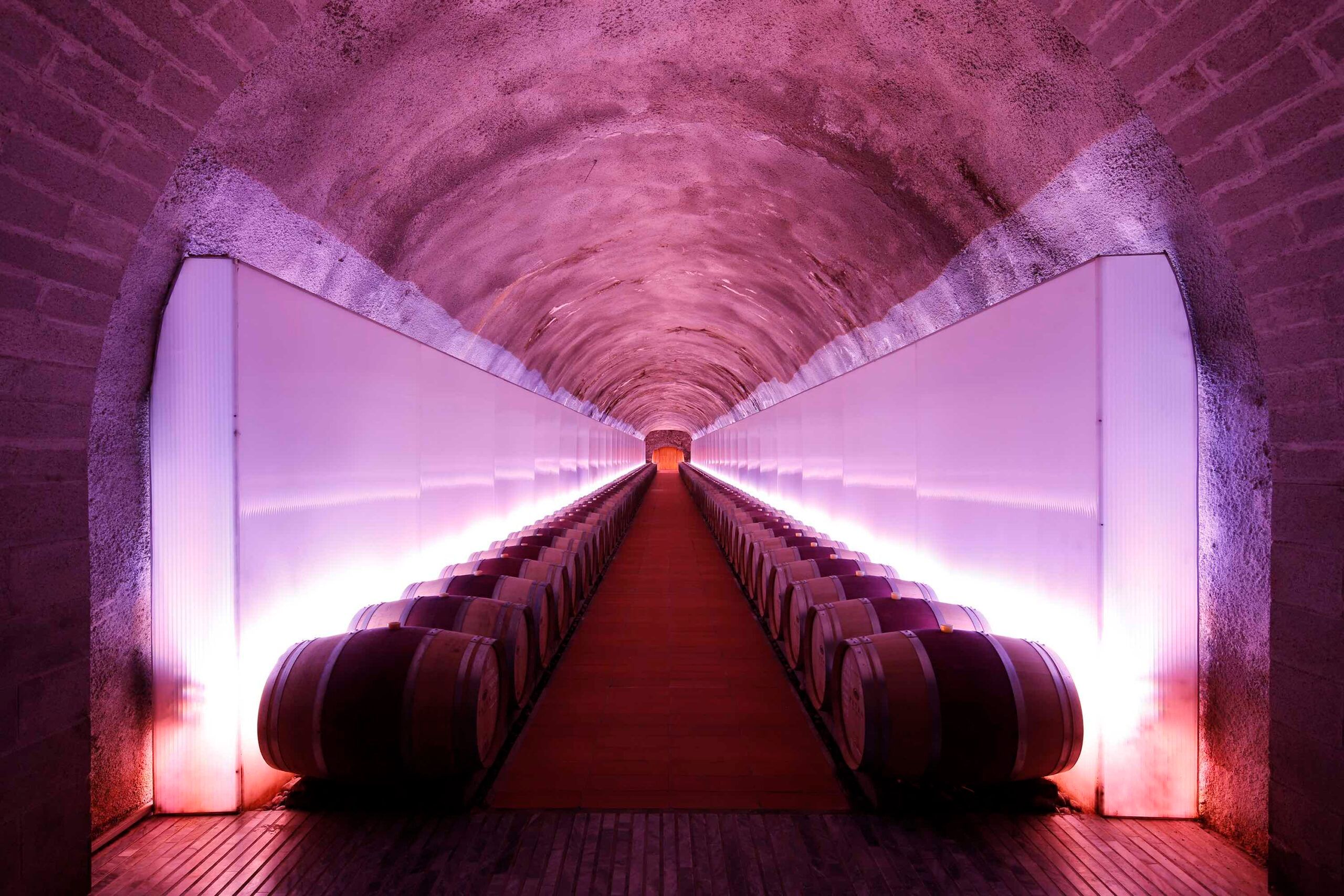“Every idea, every dream thrives on ambition and planning,” says Terra Moretti founder, Vittorio Moretti.
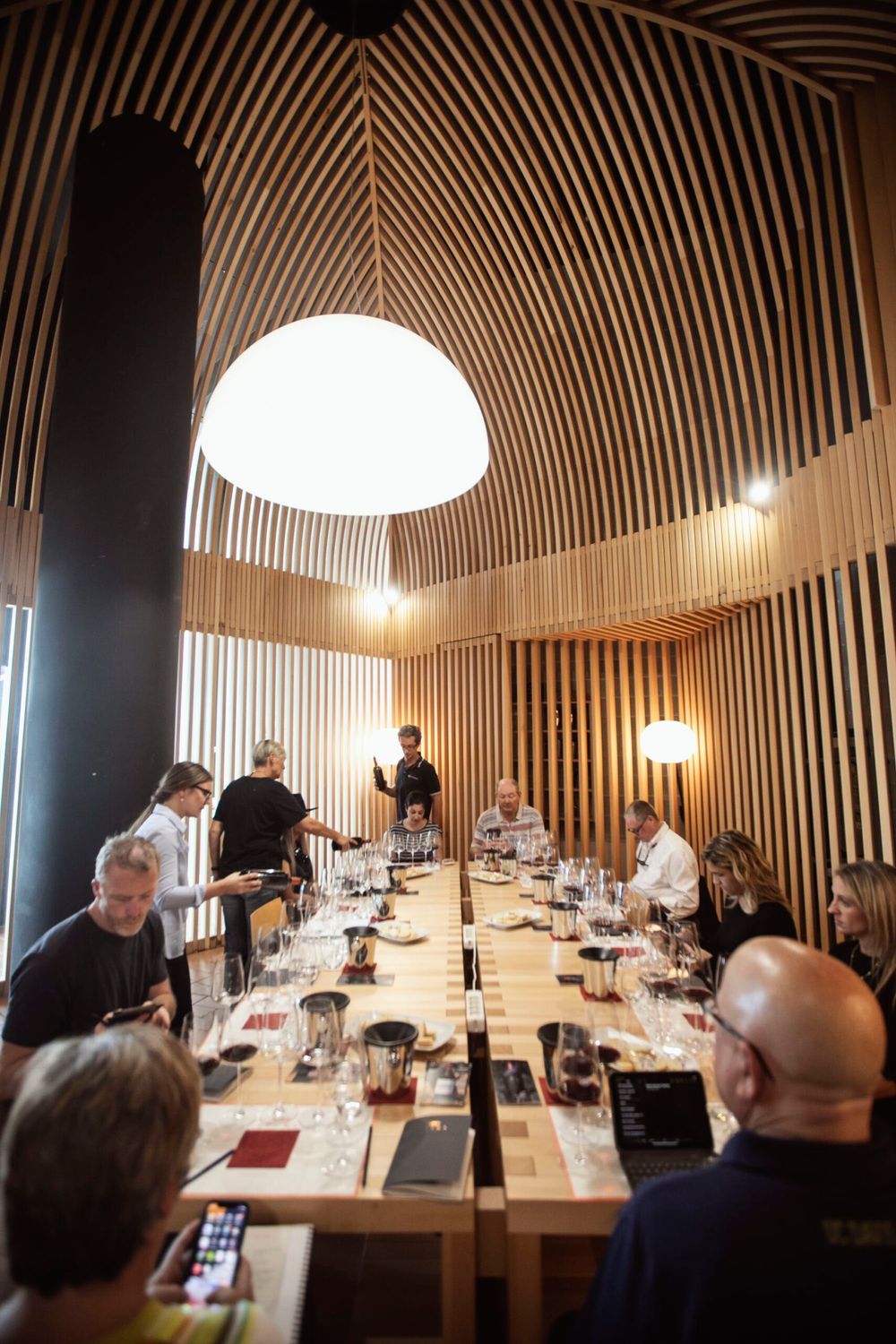
Tasting in the futuristic Petra winery, November 2022
While the Terra Moretti wine group may not be overly familiar to the majority of wine drinkers in the UK, it is both well-known and highly regarded in Italy. With a turnover of €65 million, a production of 8.5 million bottles per annum, 548 employees and 1,154 hectares under vine, it has six wineries in three different regions – Franciacorta, Tuscany and Sardinia – and exports to multiple overseas markets.
Built up over the last four decades by its founder, Vittorio Moretti, a construction mogul, the group is now led by his winemaker daughter, Francesca, who became president in September 2020 when he stepped down. Two years after her accession, The Buyer was invited to visit the group’s wineries in Tuscany and Sardinia, namely Petra and Sella & Mosca.
Petra: a Terra Moretti estate in Tuscany

A tourist attraction in its own right: the 141 steps of pink Verona stone at Petra
Jeanette Servidio, Petra’s general manager, pointed to the fact that the UK is 21st in the group’s league table of export markets. “We would really like to raise the group’s profile in Great Britain, and to increase our exports there through our importer Liberty Wines,” she said. Given the range, quality and fair value of their wines tasted on the trip, the prospects ought to be good.
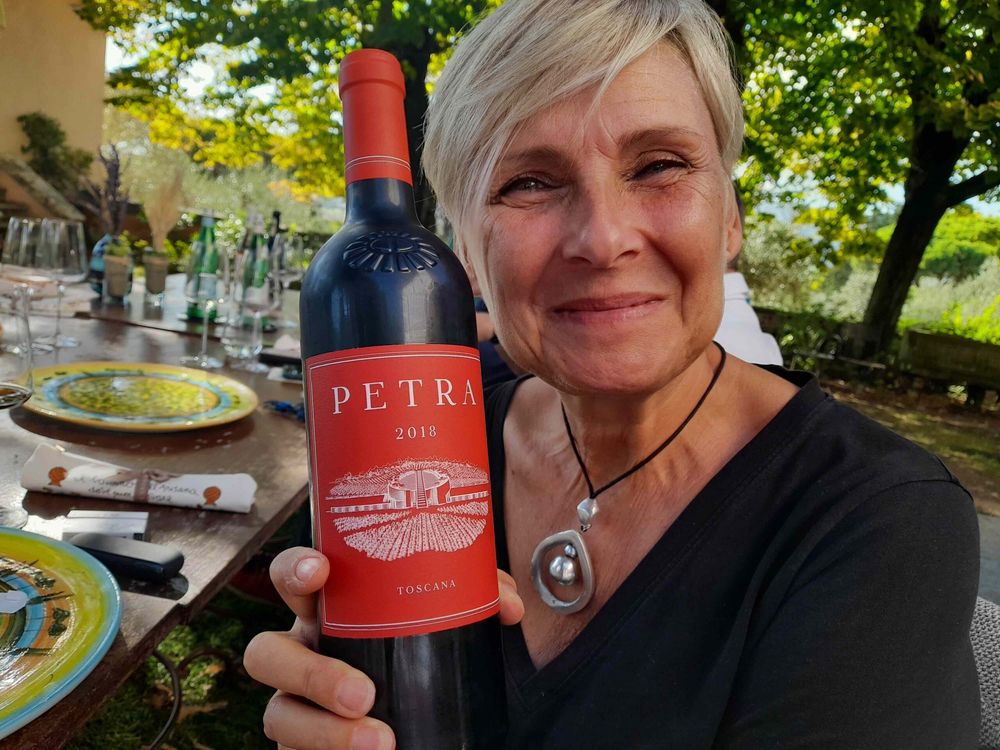
Raising the profile in the UK: Jeanette Servidio
Petra, just over 100km south of Pisa in Maremma, was founded by Vittorio Moretti in 1997, and has one of the most striking cellars in Italy. Designed by Swiss architect, Mario Botta, it incorporates a stone cylinder bisected by a flight of 141 steps made of Verona pink ‘prun’ stone. In Botta’s words, “it looks like an item dropped from Mars.” Nestled against the hillside with the Montioni national park behind it, it is a major visitor attraction.
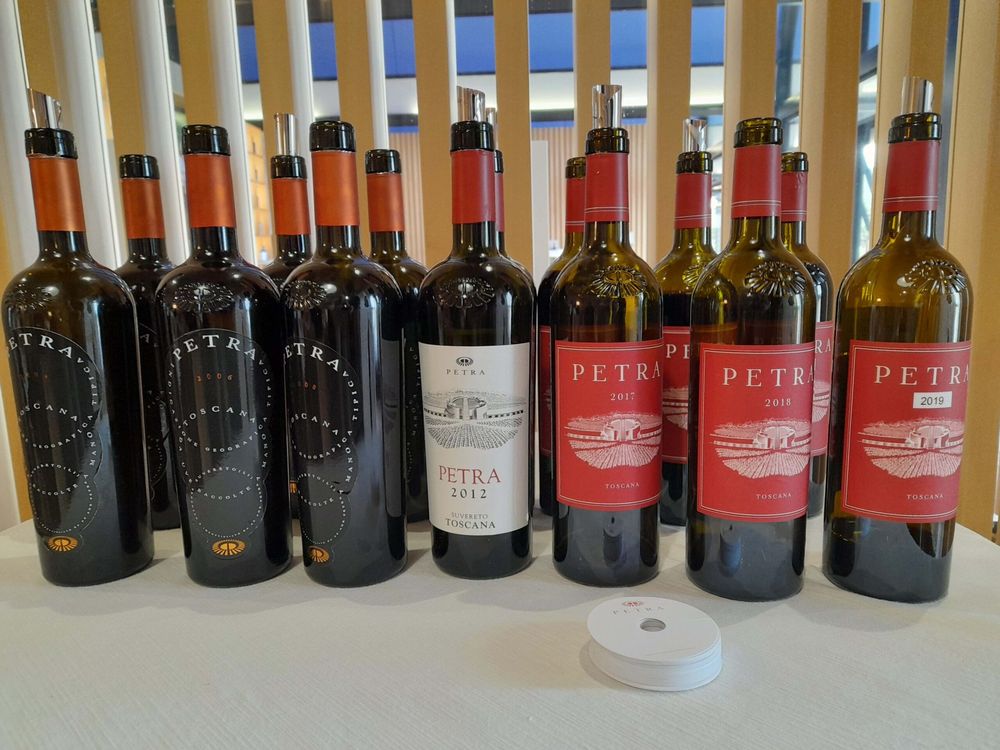
As enticing as its futuristic cellar are Petra’s wines. A vertical tasting of seven vintages between 2004 and 2019 of Petra’s flagship Toscana IGP Bordeaux blend underlined how well they age. At an RRP of £35 for the latest vintages, they represent very fair value. The 2004, an exceptional vintage, was made up of 55% Cabernet Sauvignon and 45% Merlot. Very refined with some balsamic notes, it had beautifully integrated tannins (having been aged in 50% new oak).
Petra’s current winemaker, Augusto Graziano, produced his first vintage in 2006 and increased the Cabernet to 70% as well as introducing cold soaking. From the 2014 vintage, however, a major change in style was initiated by a new consultant oenologist, Giuseppe Caviola after he replaced Pascal Chatonnet, a Frenchman. Caviola looked for more elegance, less extraction and a focus on terroir.
New oak was reduced to 30% in the 2017 vintage, and from 2018, 10% Cabernet Franc was included for the first time, with the Cabernet Sauvignon reduced to 60%. The as-yet-unreleased 2019 showed particularly well, being a combination of structure, power and elegance. According to viticulturist, Alberto Simonelli, what really made the vintage was 58mm of rain on July 27, a rare occurrence that allowed ripening without stress.

What has been released from the outstanding 2019 vintage are three other premium labels of Petra wines, all of which are single varietals and retail for a competitive €25 at the cellar door. These are Colle al Fico (a spicy Syrah), Potenti (an elegant Cabernet Sauvignon) and Quercegobbe (a rich and fleshy Merlot). All saw 20% new oak, and are nicely structured with fine fruit, fresh acidity and silky tannins helping to balance out ABVs of 14.5%.
Sella & Mosca: a Terra Moretti estate in Sardinia
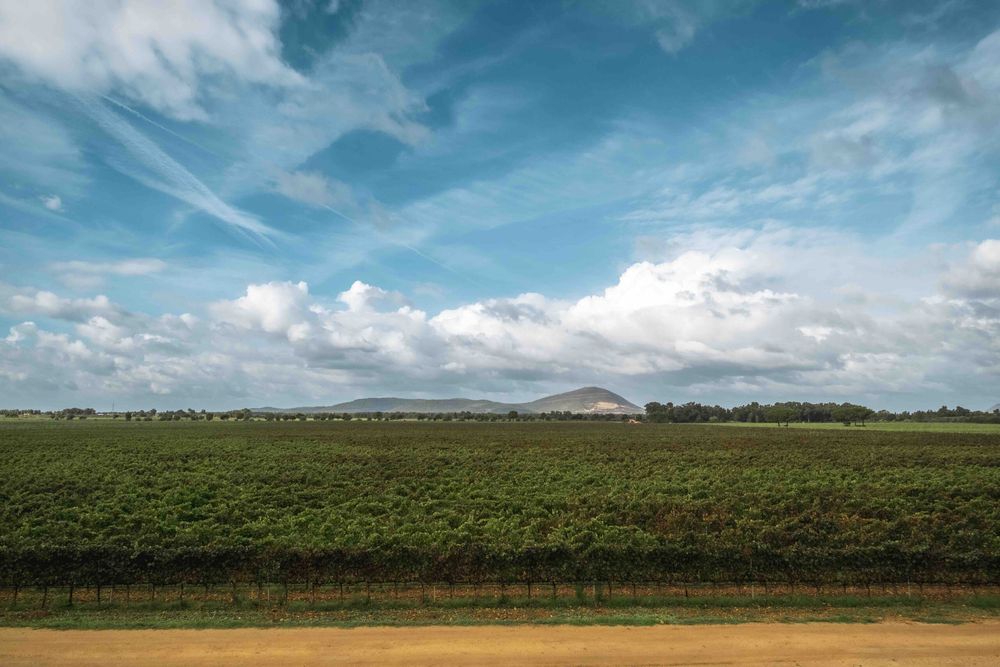
Terra Moretti
Terra Moretti’s Sardinian winery, Sella & Mosca, has 577 hectares spread over the island – 550 hectares near Alghero in the north-west, 16 in Gallura, 6 in Sulcis and 5 in Ogliastra. Varietals grown include Vermentino, Cannonau, Cabernet Sauvignon and the rare white grape, Torbat. The latter is used to make its traditional method ‘Oscari’ sparkling wine, although that is not exported to the UK. Alvini in north London import several labels, with Notts-based retailer Tannico also housing a good number, including a still Torbat.
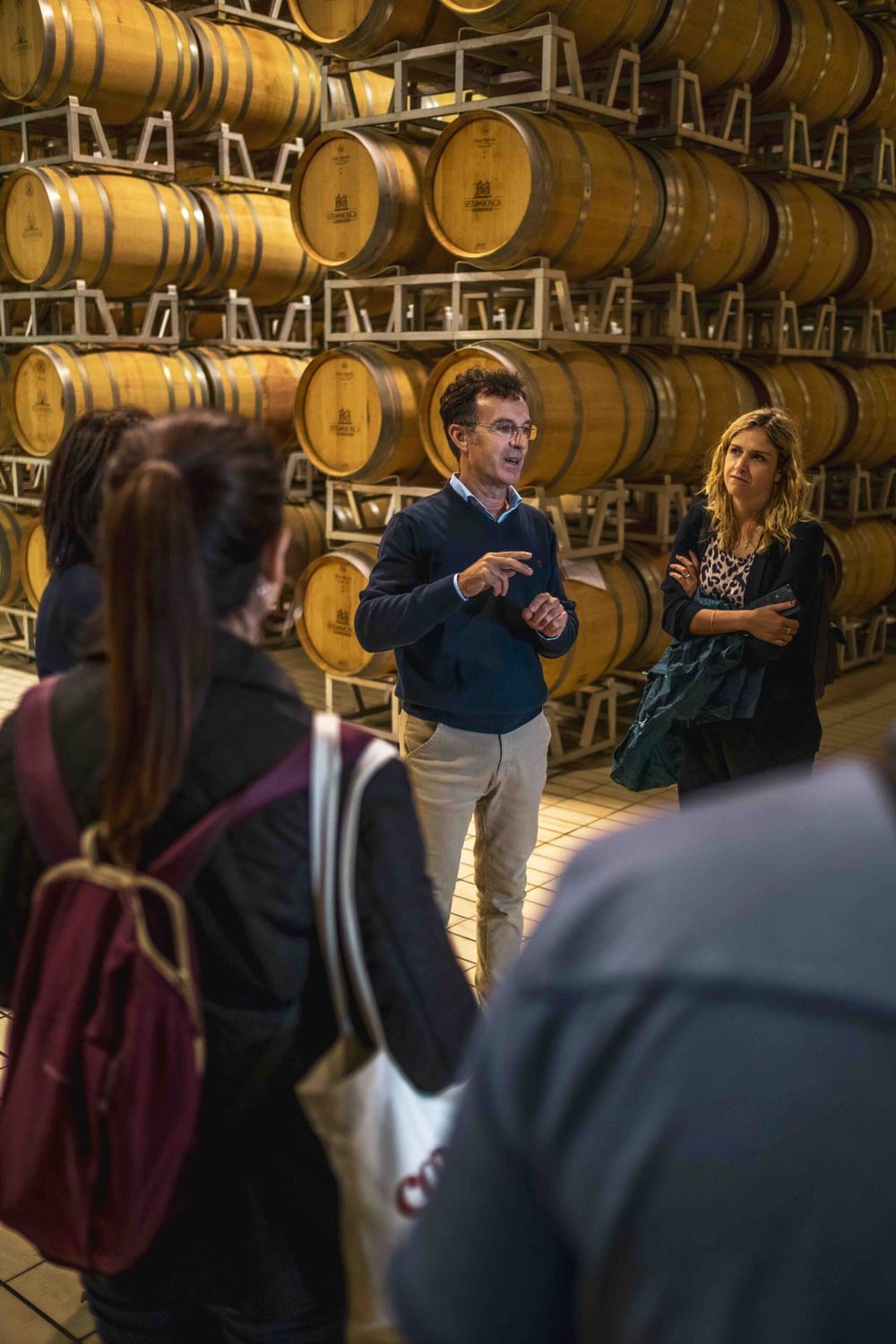
Giovanni Pinna: Terra Moretti’s winemaker in Sella & Mosca
Sella & Mosca’s winemaker for the past 23 years, Giovanni Pinna, declared that there is “a very good marriage between Vermentino and Sardinia because of the sunshine and, in particular, the light.” He showed us three different Vermentino labels, made in quite different styles: La Cala Reale 2021, a good everyday easy-drinker; Monteoro 2021 from the Gallura Superiore DOCG, which is fuller-bodied and a little more complex; and Ambat 2021, which sees 15% new oak and is more complex still, with less tropical fruit and a touch of pleasing bitterness.
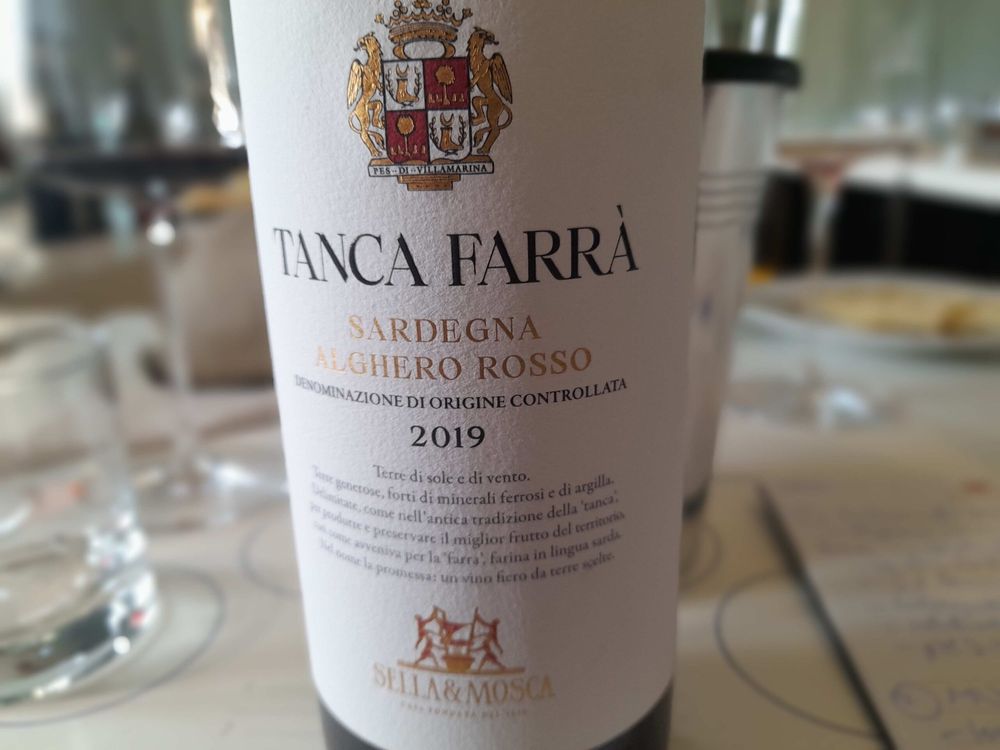
The Cannonau grape featured in three of the four Sella & Mosca red labels we tasted. Two were well-made mid-market 50:50 blends with Cabernet Sauvignon – the Cannonau di Sardegna Riserva 2019 and the Tanca Farra Sardegna Alghero Rosso 2019. Both were 13.5% abv and aged in old oak but the latter had more complexity with appealing saltiness. The Mustazzo 2018, which is 100% Cannonau, was aged in 20% new oak and had impressive structure, notable freshness (from a low pH of 3.3) and excellent length.
A vertical tasting of four vintages (2016, 2012, 2010 & 2006) of Sella & Mosca’s flagship red, the Marchese Villamarina, underlined the high quality and sense of place of single varietal Cabernet Sauvignon from the island. Comfortably absorbing 100% French new oak, they all showed superbly, with the 2016’s retail price of €32 being very good value. “A really Mediterranean Cabernet Sauvignon,” purred Pinna. “Not muscular but very elegant.” He could not have chosen a better epitaph for Sella & Mosca’s impressive reds that complement their renowned range of Vermentinos.
